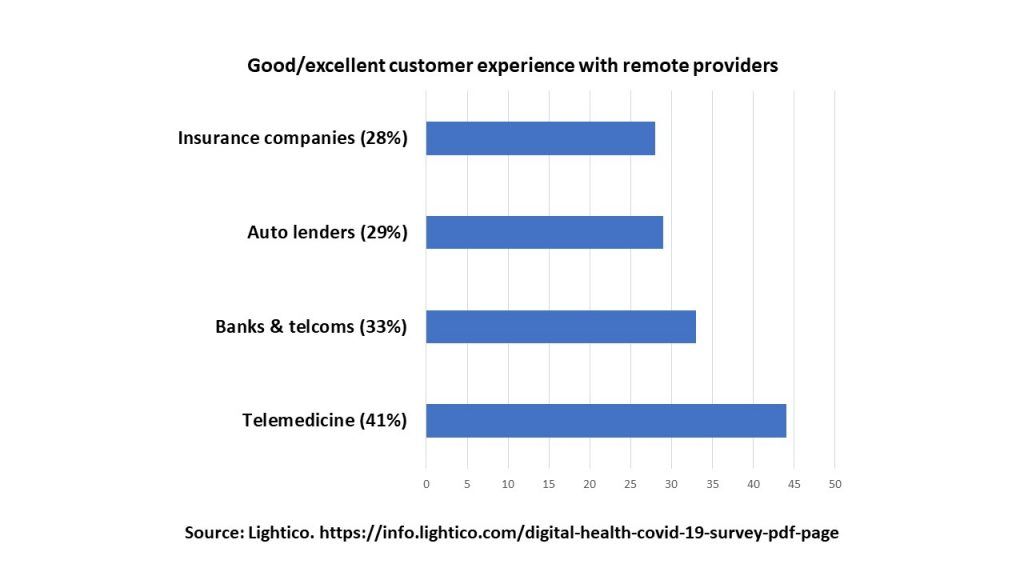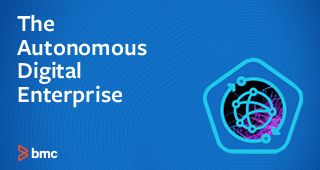If the current environment has taught us anything, it’s that the digital transformation that’s been looming for the enterprise is now most definitely here. Companies of every shape and size have had to move their business—and employees—online, whether they were ready or not.
Some that might have been hesitant to embrace an online-only footprint have since discovered it’s the only way to stay in business. One of the five enablers of the Autonomous Digital Enterprise is a Transcendent Customer Experience, and the good news for companies that were already prepared for the current climate—or were able to course-correct quickly—is that they are well on their way to thriving in the new normal.
Accessing the world from the palm of your hand
A Transcendent Customer Experience recognizes the power of the mobile-first mindset, driven by enhanced, automated features that allow customers to get what they want, when and where they want it, all from their cell phones, tablets, laptops, or other device of their choosing. Right now, that means anything from ordering groceries, paying bills, and donating to local charity organizations to a virtual doctor’s visit or arranging classwork and video-enabled classes for kids at home. And a new and still-rising wave of interactive apps have made it all possible. According to a recent poll by Lightico, telemedicine is coming out ahead of other real-time remote providers in delivering a good or excellent customer experience.

Proactive customer experiences
In the current environment, as stay-at-home orders have extended from days to weeks and months, customers’ daily wants have turned into daily needs. Anyone using a browser to search for everything from recipes to face masks has no doubt noticed that the embedded ad links are keeping up—weaving banners for hand sanitizers, face masks, and other items into your online activity. The reactive customer experience has become a proactive customer experience through machine learning (ML) and other artificial intelligence (AI) techniques that actively anticipate customer needs.
The blend of technology engagement and a human touch has also happened in real-time, with automated functions stepping in for many historically in-person customer activities. That’s been incredibly efficient, but also makes getting a person on the phone if you need one a legitimately special occurrence. We’re all familiar with the, “We are experiencing higher-than-normal call volumes. Your call is very important to us…,” refrain when we’ve dialed a call center, especially of late. So, you’re not alone in trying to reach a human being.
Companies that do customer service right offer the balance of an intelligent do-it-yourself experience for those who want it, backed up by humans for those who prefer a personal touch instead. LivePerson is one company working hard to meld AI and humanity for the ultimate call center experience, and it’s even creating new jobs like “bot manager” and “conversation designer.” As they told Venture Beat, “We’ve found that contact center agents are the best people to take on these roles, as they’re on the frontlines taking care of customers every day, and with our tools, they don’t need to know how to code to build and optimize bots.”
Redefining customer loyalty
Customer loyalty has also been transformed by needs instead of wants. Where it once was important for companies, products, brands, and devices to consistently provide exceptional value with minimum friction or stress, that’s now compounded by the ability to deliver immediately. Case in point, customers may have to expand beyond their comfort zone of usual providers to get what they need as soon as possible.
As an example, many major grocers have been in the online ordering and delivery space for a while, but now those services come with widely variable turnarounds—from within a day to up to a week or more away. In that scenario, loyalty is going to shift to the provider who doesn’t just check the boxes of value and ease-of-use—speed becomes more important. While some retailers can’t yet improve the speed factor, they can deliver flexibility, which is also a win when you’re shopping ahead for multiple days or weeks at a time and are likely to forget something between order and delivery.
Kroger is a leader in this space, creating a value-added customer experience by letting you start your list and book a time several days out and then allowing you to add to your shopping list until the night before delivery. Other retailers only offer the flexibility of minimal changes, or none at all. That said, the “human touch” aspect is currently an unseen outlier—a shopper hand-picks your groceries behind-the-scenes and no-contact delivery means you might never see the delivery person.
The human/AI hybrid of customer service is also moving into the unlikely area of car buying. An often-arduous process has been significantly streamlined by going digital with virtual vehicle tours, electronic financing, and in some cases, contactless delivery. Auto dealers have adapted their processes to keep cars moving off the showroom floor, and it’s empowered customers to purchase a vehicle quickly and efficiently with minimum physical interaction.
Businesses can learn from the lessons of the current climate and integrate them into their processes going forward. The inciting events were unforeseen, but their benefits will be long-range and shape the future of the enterprise.
The Autonomous Digital Enterprise
These postings are my own and do not necessarily represent BMC's position, strategies, or opinion.
See an error or have a suggestion? Please let us know by emailing blogs@bmc.com.







